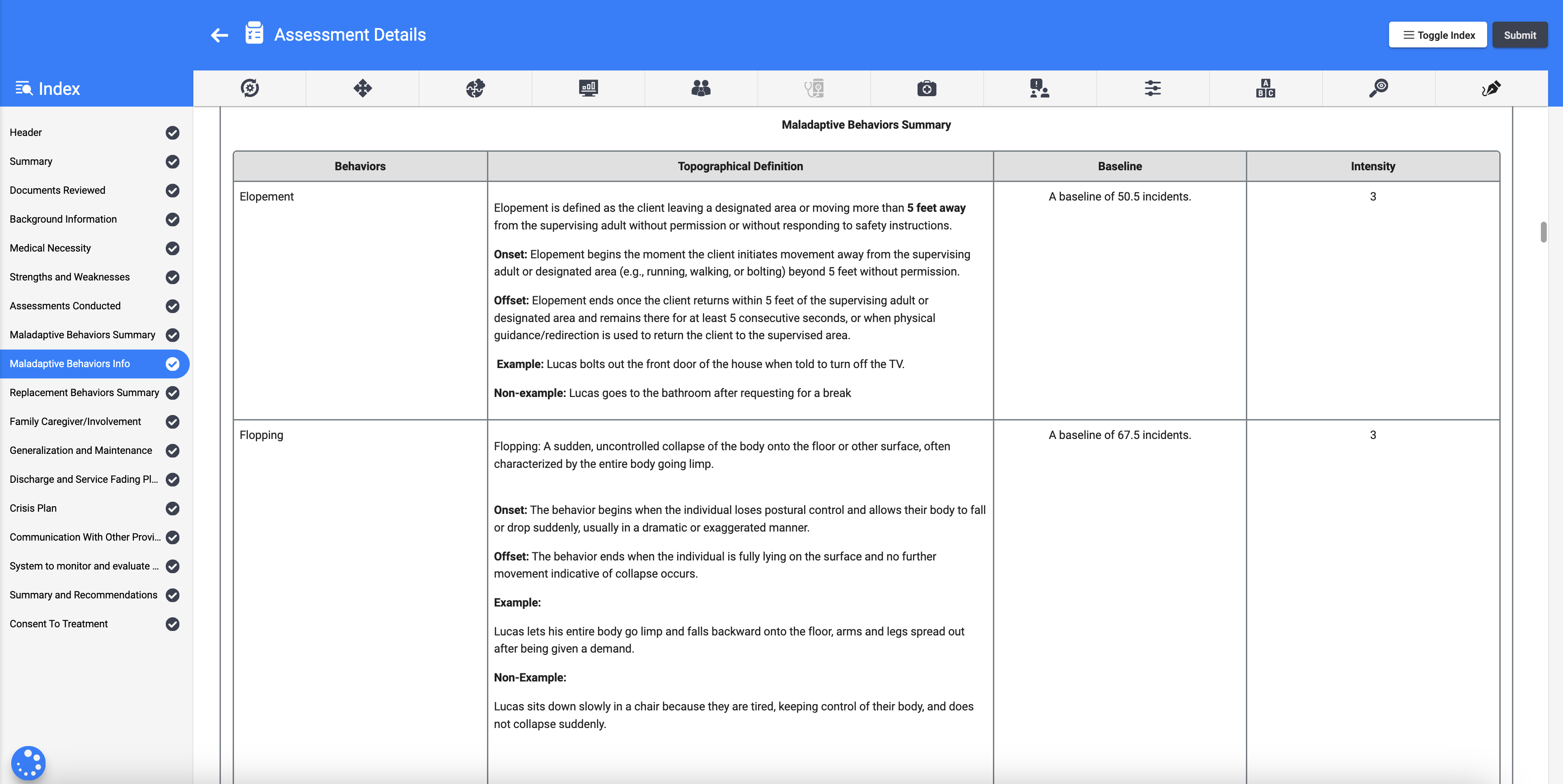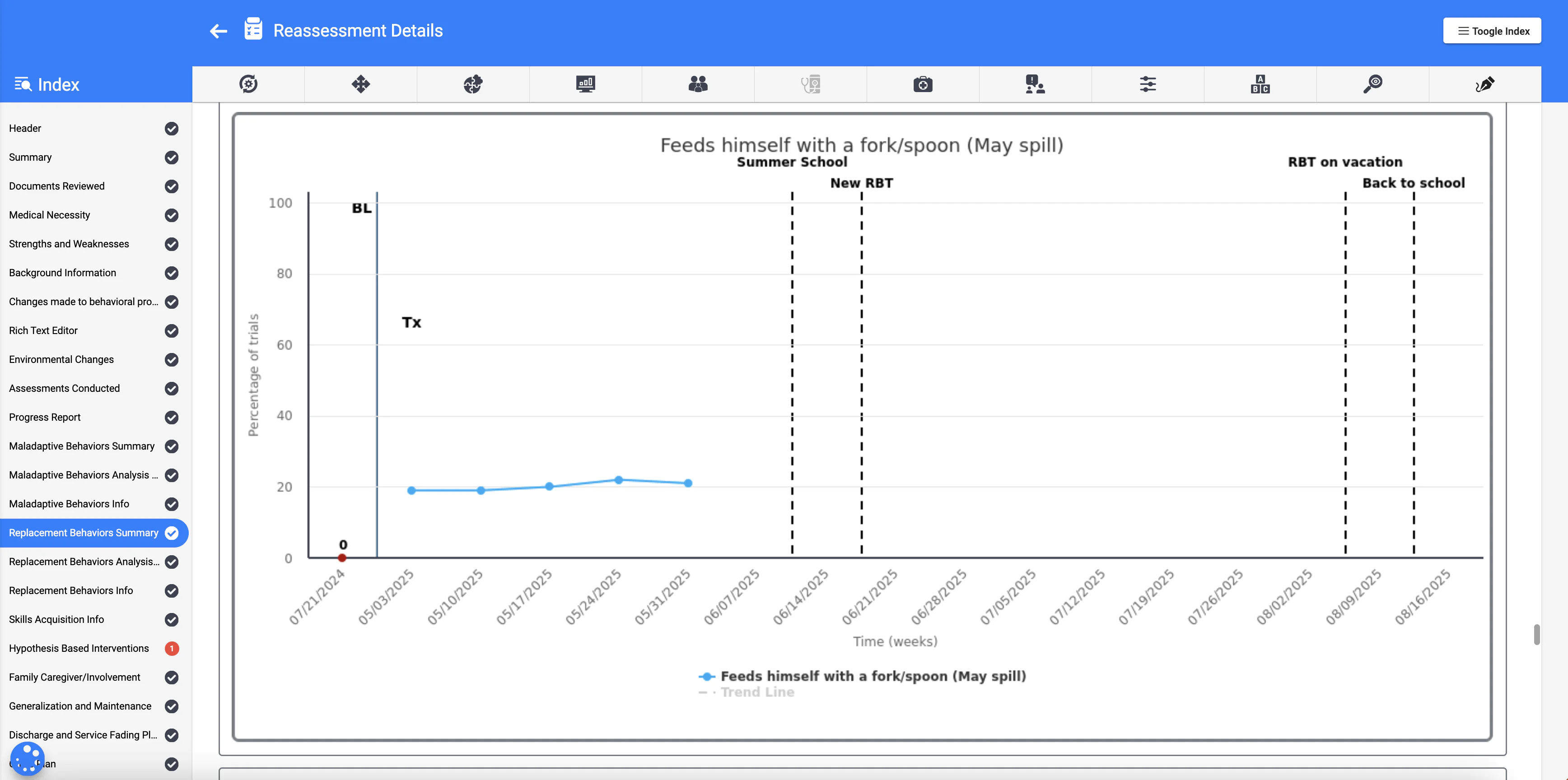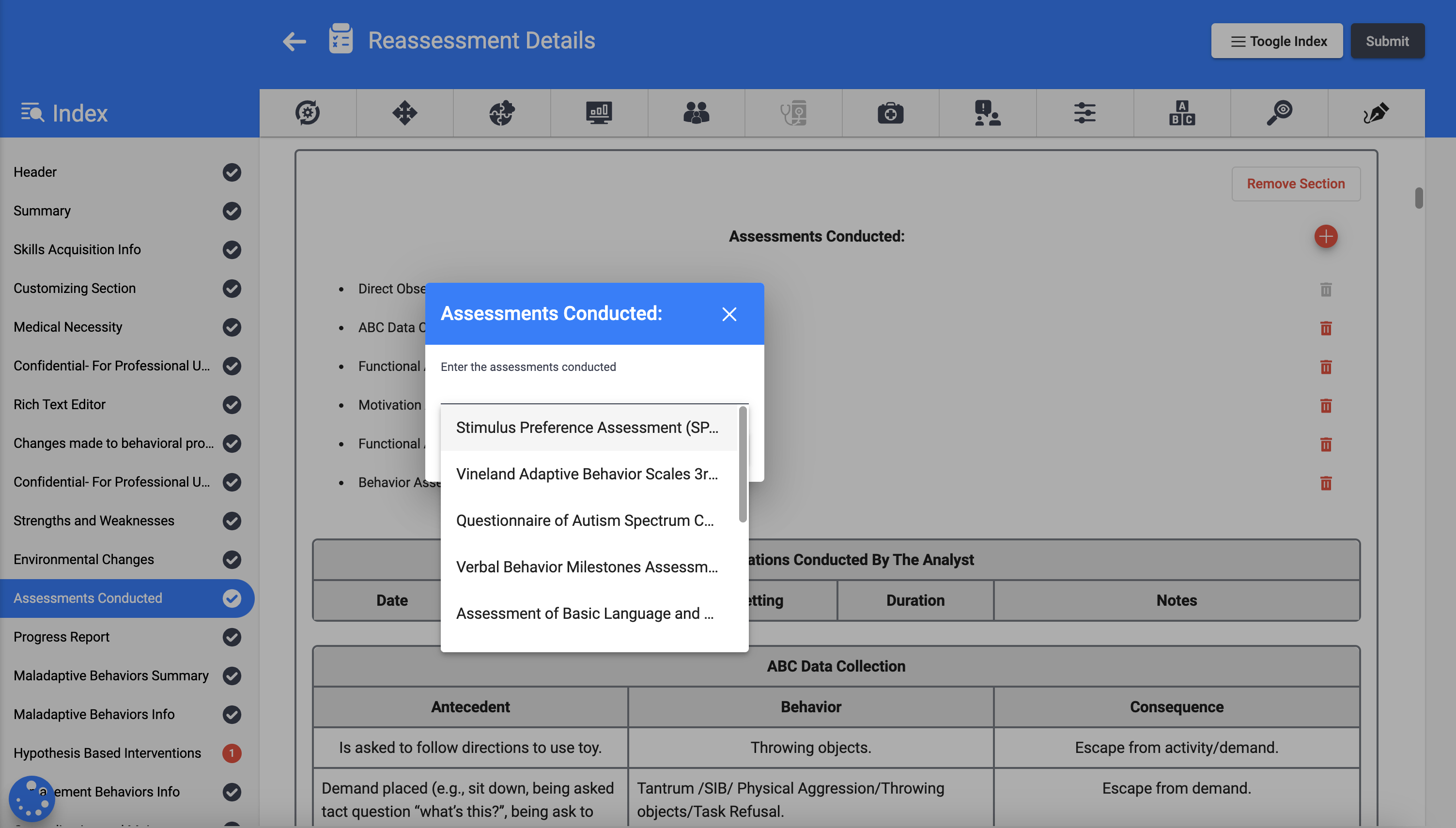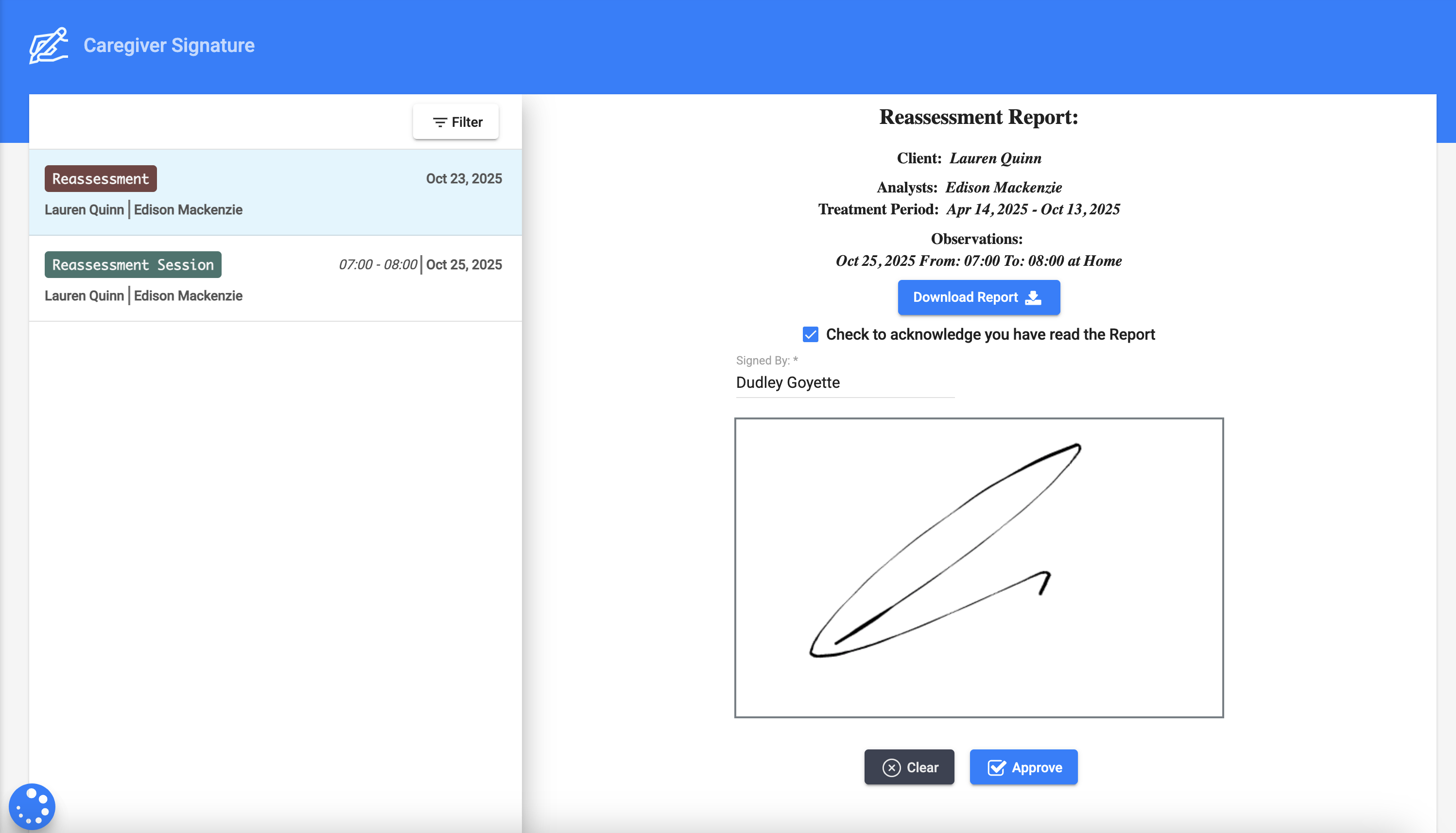If you’ve ever pulled two ABA therapy treatment plans from two different clinicians and wondered if they were working on the same client, you’re not alone. In most ABA practices, treatment plans vary wildly in structure, tone, and detail. One reads like a polished research paper, the other like a Post-it note with goals.
And while creativity is great, inconsistency? Not so much.
Because in ABA therapy, treatment plans are more than documents; they’re the clinical foundation of a client’s care. When they vary too much, they cause real-world issues: payer denials, compliance risks, inefficient reviews, and confusion for caregivers and RBTs.
It’s no surprise that many practices are now moving toward a more standardized, streamlined approach. Let’s explore what that looks like.
What Is a Treatment Plan in ABA Therapy?
A treatment plan in behavior analysis is essentially the client’s roadmap. It describes their current level of functioning, outlines identified skill deficits and behavior concerns, and lays out the BCBA’s recommended interventions. It explains why services are medically necessary and how progress will be measured.
A strong therapy treatment plan is always individualized, always data-driven, and always evolving. And frankly, it should be written for humans, not just auditors.
The Core Components of an Effective ABA Therapy Treatment Plan
Every high-quality ABA treatment plan includes a few core elements, even if the style differs from clinician to clinician. It starts with baseline assessments, where the BCBA captures communication, social, adaptive, and behavioral functioning, along with caregiver insights and environmental context.
From there, the plan moves into long-term goals: those bigger, socially significant objectives that guide the overall direction of therapy. Then come the short-term objectives, or STOs, which translate those long-term goals into achievable, measurable steps that drive daily RBT implementation.
If behaviors are a concern, the plan may also include a Behavior Intervention Plan detailing functions of behavior, replacement skills, and intervention strategies. And finally, the BCBA outlines treatment intensity and service recommendations, complete with the necessary medical-necessity justification.
Progress monitoring ties everything together. This is where STO mastery, behavior change trends, and ongoing data get reported consistently, ideally without hours of manual copy-and-paste.
With ABA Matrix, these components aren’t reinvented every time. Baseline data pulls directly from your sessions. STO progress integrates automatically. Graphs appear without the spreadsheet juggling. In short, you get consistency without extra work.
Why Standardization Matters in ABA Treatment Plans
Standardization isn’t the enemy of good clinical work. In fact, it supports it. When treatment plans follow a familiar structure, clinicians don’t forget important sections, RBTs know exactly where to find what they need, caregivers get clearer explanations, and clinical directors can review documentation quickly.
From a compliance perspective, consistency is a lifesaver. Payers expect specific information, and standardized ABA treatment plans naturally align with those expectations, meaning fewer revisions, fewer denials, and fewer “please resubmit” emails that ruin your day.
It also makes progress reporting smoother. When every plan uses the same structure, graphs, narrative updates, and STO mastery summaries are always exactly where they should be. Continual training becomes easier, too; new BCBAs can learn your practice’s documentation standards without decoding everyone’s unique writing style.
And here’s the magic: when the structure stays the same, the content becomes even more personalized. Standardization creates the foundation. Your clinical insight fills it in.
Lastly, standardization doesn’t just improve quality; it also saves an enormous amount of time. When every treatment plan follows the same structure, clinicians spend less time formatting, rewriting, and searching for data, and more time actually providing care.
Over time, those hours add up, creating space for your team to take on more clients, improve oversight, and scale your practice with confidence. Consistent documentation strengthens your foundation, giving your practice the efficiency it needs to grow sustainably, without burning out your clinicians in the process.
Building Consistency From Day One: Assessments and Reassessments
One of the biggest reasons treatment plans look so different from one clinician to another is the assessment process.
ABA Matrix fixes that at the source by giving every BCBA a standardized, dynamically prefilled assessment to start from. Everyone begins with the same strong foundation, while still keeping full autonomy to edit, adjust, and personalize every field.

When an analyst opens an assessment, key details: client demographics, environmental updates, session insights, STO progress, and graphs, are already there.
And that consistency doesn’t stop after the initial plan. Reassessments follow the same clear structure, ensuring updates stay organized and complete over time.

Progress data like STO mastery, graphs, and behavior trends flow in automatically, so clinicians aren’t digging through old notes or rebuilding sections from scratch.
Customizable Report Sessions: Standardization Without Rigidity
One of the biggest myths about standardizing ABA treatment plans is that it limits creativity or personalization. But customizable templates in ABA Matrix make room for both.

Your practice can create templates that match your exact workflow, include the sections you care about most, and follow the structure your clinical team believes in. And within that structure, clinicians can write how they write, interpret how they interpret, and personalize plans to each client’s unique profile.
Templates support a variety of formats, narratives, checkboxes, tables, graphs, and images. Clinicians don’t have to change their style to fit the software. The software adapts to them.
Bringing Assessments and Standardized Tools Into the Plan
Whether your team uses VB-MAPP, Vineland-3, ABLLS-R, or other tools, everything fits cleanly into a structured section within the treatment plan. No more fifteen open documents, no more mismatched formats, no more “where does this go?” dilemmas.

Clearer Caregiver Communication Through Consistent Plans
Caregivers appreciate clarity. When every plan follows a similar flow, families can more easily understand the goals, progress, and recommendations. ABA Matrix adds caregiver portal access and electronic signatures so parents stay informed and engaged without the back-and-forth email chains.

And when payer submissions are needed, the PDF exports are clean, standardized, and professional.
In the end, treatment plans are strongest when they follow a clear, consistent structure while still allowing for true clinical personalization. That’s exactly what ABA Matrix delivers. By standardizing assessments, streamlining reassessments, and offering flexible templates, you get treatment plans that are organized, compliant, and individualized—without extra work. It’s an easy way to boost quality, improve communication, and make documentation feel a whole lot lighter.
